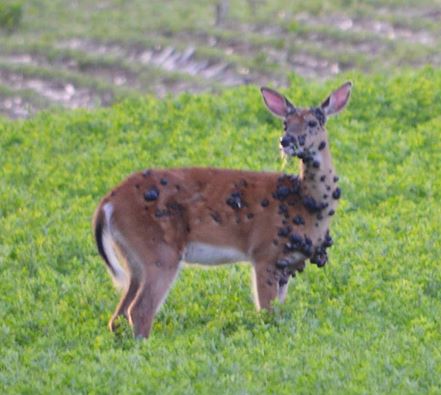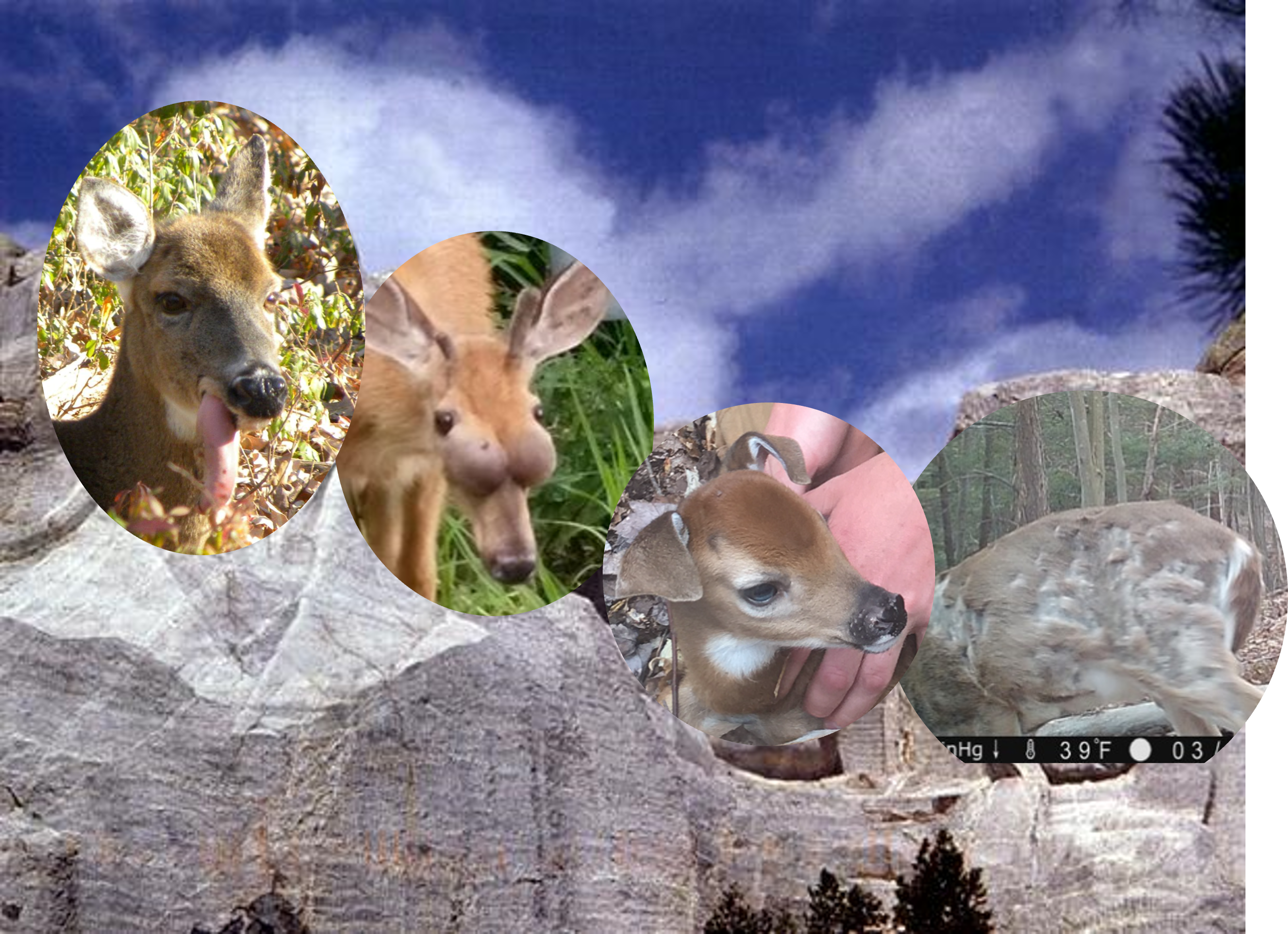For nearly a decade, the Brown/Fleegle dynamic duo have bonded over weird and “wonderful” wildlife diseases. Imagine opening an email with bloody nondescript photo with the subject line “what the h*ll is this.” Wonder Twin powers ACTIVATE!
As a veterinarian and a biologist, we see (and hear!) a lot of crazy stuff…at birthday parties, soccer games, Thanksgiving, in text messages from our aunt. It’s a hazard of our professions. Or for us, more like a perk! A lot of the images we see are common afflictions of wildlife, and we sound really smart suggesting what we think is going on and what the outcome for the afflicted may be. Take fibromas. Probably the most widespread skin ailment of deer. We get lots of photos like this and give our “expert” diagnosis:

However, our diagnostic euphoria is usually short lived. Because we get many more photos that completely stump us. Those photos are both exciting and frustrating. In many cases, these images represent new or novel diseases that are yet to be identified and understood.
Some new diseases, particularly those that cause a large number of animals to die, get much attention and research is quickly launched to “figure out” what is going on. However, other diseases may take decades to understand especially if they are uncommon or don’t cause a “sky is falling” response from the public.
For example Bullwinkle deer. We first started to see this syndrome in sporadic images in the early 2000s in the Southeastern US. Deer with muzzles so swollen that they looked like the cartoon character Bullwinkle. Over the next 20 years, more images from deer in the eastern US were collected. And every now and then, we’d get lucky and a sporadic case would be submitted to the lab for further testing. Eventually, the wildlife disease community found the answer.
But not all diseases get this type of closure.
We give you the Mount Rushmore of unsolved deer diseases.

Floppy Tongue Syndrome
Deer have pretty long tongues…that should be fully in their mouth. When it’s not, people take notice. We’ve received many photos over the years of deer with their tongue flopping about.
Bubble-Face Disorder
Perhaps a bit crude of a description but it fits. We even wrote a post about it.
Curled Ear Condition
A deer’s ears are a bit iconic. Able to move in just about any direction, they can hear a proverbial pin drop in the woods. If the flaps are folded, something ain’t right.
Alopecia Attack
Deer without hair get a lot of attention. There are some usual suspects (Demodex, lice, dermatophilosis) but there is a mysterious hair loss syndrome often associated with feeding that we just can’t put our finger on.
While we don’t have the answer to what causes these maladies, we do have an army of watchers that cover every corner of the state. Who are these spies? YOU!
Anyone can play a role in wildlife surveillance. In fact, our Wonder Twin powers are a bit useless if we don’t have eyes in the woods. Like trail cameras which provide an endless source of lumps, bumps, and protrusions of every size, shape, and color. And hunters who get their hands on 1,000s of specimens every year.
See something weird in a photo or your backyard? Find something dead? Report it!
Drop an email to the Ask a Deer Biologist account or use the new PGC Wildlife Health Survey tool.
But before you hit that send or submit button, channel your inner Columbo
- The better the picture, the more likely we are to correctly identify the issue. It’s the digital era and film is cheap so don’t be afraid to take multiple pictures
- Try to use descriptive terms. “Big” or “lots” don’t really mean anything. It is better to use comparisons or size and color relative to common things.
- Follow Sally Albright’s lead when ordering food – the more detail the better! You can never give too much information. Anything about the environment, behavior, history, symptoms, etc may be helpful.
- Don’t wait! Time is not on our side. Sick animals disappear. Samples degrade. We frequently get reports that are weeks after seeing a sick critter making it almost impossible to follow up.
- And lastly, be patient. Like you, we care about wildlife. But there are only so many of us. And hunting seasons scatters most of us to the 4 winds.
The next time you see something and ask “what the h*ll is that,” snap a pic, make a note, and let us know! We live for the weird, gross, and peculiar.
-Dr. Justin Brown and Jeannine Fleegle